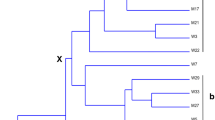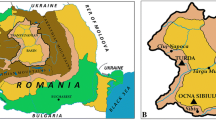The culturable diversity of halophilic obligately chemolithoautotrophic sulfur-oxidizing bacteria (SOB) in various aquatic hypersaline habitats, such as inland chloride–sulfate lakes, sea solar saltern and deep-sea salt brines, was found to be unexpectedly high. Six different groups of halophilic SOB belonging to the Gammaproteobacteria were found. Two groups of moderately halophilic strictly aerobic SOB dominated at 2 M NaCl, including representatives of the genus Halothiobacillus (at fully aerobic conditions) and the genus Thiomicrospira (at microoxic conditions). In a few cases, halothiobacilli also dominated at 4 M NaCl. Under denitrifying conditions at 2 M NaCl, moderately halophilic and facultatively anaerobic SOB capable of complete denitrification of nitrate were found. They are a member of a new genus, “Thiohalomonas”, with closest relatives among marine thiodenitrifyers. At moderate salinity and with thiocyanate as a substrate, a pure culture of moderately halophilic SOB capable of growth with thiocyanate and thiosulfate up to 4 M NaCl was obtained, and these SOB are a member of a new genus “Thiohalophilus” distantly related to the genus Thiomicrospira. Two groups of extremely halophilic SOB growing between 2 and 4 M NaCl with an optimum at 3 M NaCl dominated in enrichments at 4 M NaCl. The group of obligately aerobic extreme halophiles, members of a new genus “Thiohalospira”, are related to the Ectothiorhodospiraceae, and facultatively anaerobic nitrate-reducing extreme halophiles, members of a new genus “Thiohalorhabdus”, are distantly related to the genus Acidithiobacillus.
Access this chapter
Tax calculation will be finalised at checkout
Purchases are for personal use only
Preview
Unable to display preview. Download preview PDF.
Similar content being viewed by others
References
Antón J, Oren A, Benlloch S, Rodríguez-Valera F, Amann R, Rosselló-Mora R (2002) Salinibacter ruber gen. nov., sp. nov., a new species of extremely halophilic Bacteria from saltern crystallizer ponds. Int J Syst Evol Microbiol 52:485–491.
Friedrich CG, Rother D, Bardischewsky F, Quentmeier A, Fischer J (2001) Oxidation of reduced inorganic sulfur compounds by bacteria: emergence of a common mechanism? Appl Environ Microbiol 67:2873–2882.
Friedrich CG, Bardischewsky F, Rother D, Quentmeier A, Fischer J (2005) Prokaryotic sulfur oxidation. Curr Opin Microbiol 8:253–259.
Gunde-Cimerman N, Zalar P, de Hoog S, Plemenitas A (2000) Hypersaline waters in salterns natural ecological niches for halophilic black yeasts. FEMS Microbiol Ecol 32:235–240.
Issachenko BL (1951) Chloride, sulfate and soda lakes of Kulunda steppe and its biogenic processes. In: Selected works, vol 2. Academy of Sciences USSR, St Petersburg, pp 143–162 (in Russian).
Kelly DP, Baker SC (1990) The organosulfur cycle: aerobic and anaerobic processes leading to turnover of C1-sulfur compounds. FEMS Microbiol Rev 87:241–246.
Kelly DP, Wood AP (2000) Reclassification of some species of Thiobacillus to the newly designated genera Acidithiobacillus gen. nov., Halothiobacillus gen. nov. and Thermithiobacillus gen. nov. Int J Syst Evol Microbiol 50:511–516.
Kelly DP, Shergill JK, Lu W-P, Wood AP (1997) Oxidative metabolism of inorganic sulfur compounds by bacteria. Antonie Van Leeuwenhoek 71:95–107.
Kelly DP, Stackebrandt E, Burghardt J, Wood AP (1998) Confirmation that Thiobacillus halophilus and Thiobacillus hydrothermalis are distinct species within the s-subclass of the Proteobacteria. Arch Microbiol 170: 138–140.
Nelson DC, Jannasch HW (1983) Chemolithoautotrophic growth of a marine Beggiatoa in sulfide-gradient cultures. Arch Microbiol 136:262–269.
Nercessian O, Fouquet Y, Pierre C, Prieur D, Jeanthon C (2005) Diversity of Bacteria and Archaea associated with a carbonate-rich metalliferous sediment sample from the Rainbow vent field on the Mid-Atlantic Ridge. Environ Microbiol 7:698–714.
Oren A (1999) Bioenergetic aspects of halophilism. Microbiol Mol Biol Rev 63:34–348.
Oren A (2002) Halophilic microorganisms and their environments. Kluwer, Dordrecht.
Sass A, Sass H, Coolen MJ, Cypionka H, Overmann J (2001) Microbial communities in the chemocline of a hypersaline deep-sea basin (Urania Basin, Mediterranean Sea). Appl Environ Microbiol 67:5392–5402.
Sorokin DY, Kuenen J G (2005a) Haloalkaliphilic sulfur-oxidizing bacteria in soda lakes. FEMS Microbiol Rev 29:685–702.
Sorokin DY, Kuenen J G (2005b) Alkaliphilic chemolithotrophs from soda lakes. FEMS Microbiol Ecol 52:287–295.
Sorokin DY, Banciu H, Robertson LA, Kuenen JG (2005a) Haloalkaliphilic sulfur-oxidizing bacteria. In: Dworkin, Falkow S, Rosenberg E, Schleifer K-H, Stackebrandt E (eds) The prokaryotes: an evolving electronic resource for the microbiological community. Release 3.20. http://141.150.157.117:8080/prokWIP/index.htm.
Sorokin DY, Tourova TP, Muyzer G. (2005b) Oxidation of thiosulfate to tetrathionate by a haloarchaeon from hypersaline habitat. Extremophiles 9:501–504.
Sorokin DY, Tourova TP, Galinski EA, Belloch C, Tindall BJ (2006a) Extremely halophilic denitrifying bacteria from hypersaline inland lakes Halovibrio denitrificans sp. nov. and Halospina denitrificans gen. nov., sp. nov., and evidence that the genus name Halovibrio (Fendrich 1989) with the type species H. variabilis should be associated with DSM 3050. Int J Syst Evol Microbiol 56:379–388.
Sorokin DY, Tourova TP, Lysenko AM, Muyzer G (2006b) Diversity of culturable halophilic sulphur-oxidizing bacteria in hypersaline habitat. Microbiology 152:3013–3023.
Sorokin DY, Tourova TP, Kolganova TV, Spiridonova EM, Berg IA, Muyzer G (2006c). Thiomicrospira halophila sp. nov., a novel, moderately halophilic, obligately chemolithoautotrophic sulfur-oxidizing bacterium from hypersaline lakes. Int J Syst Evol Microbiol 56:2375–2380.
van der Wielen PWJJ, Bolhuis H, Borin S, Daffonchio D, Corselli C, Giuliano L, D’Auria G, de Lange GJ, Huebner A, Varnavas SV, Thomson J, Tamburini C, Marty D, McGenity TJ, Timmis KN (2005) The enigma of prokaryotic life in deep hypersaline anoxic basins. Science 307:121–123.
Wood AP, Kelly DP (1991) Isolation and characterisation of Thiobacillus halophilus sp. nov., a sulphur-oxidizing autotrophic eubacterium from a Western Australian hypersaline lake. Arch Microbiol 156:277–280.
Author information
Authors and Affiliations
Editor information
Editors and Affiliations
Rights and permissions
Copyright information
© 2008 Springer-Verlag Berlin Heidelberg
About this paper
Cite this paper
Sorokin, D.Y. (2008). Diversity of Halophilic Sulfur-Oxidizing Bacteria in Hypersaline Habitats. In: Dahl, C., Friedrich, C.G. (eds) Microbial Sulfur Metabolism. Springer, Berlin, Heidelberg. https://doi.org/10.1007/978-3-540-72682-1_18
Download citation
DOI: https://doi.org/10.1007/978-3-540-72682-1_18
Publisher Name: Springer, Berlin, Heidelberg
Print ISBN: 978-3-540-72679-1
Online ISBN: 978-3-540-72682-1
eBook Packages: Biomedical and Life SciencesBiomedical and Life Sciences (R0)




